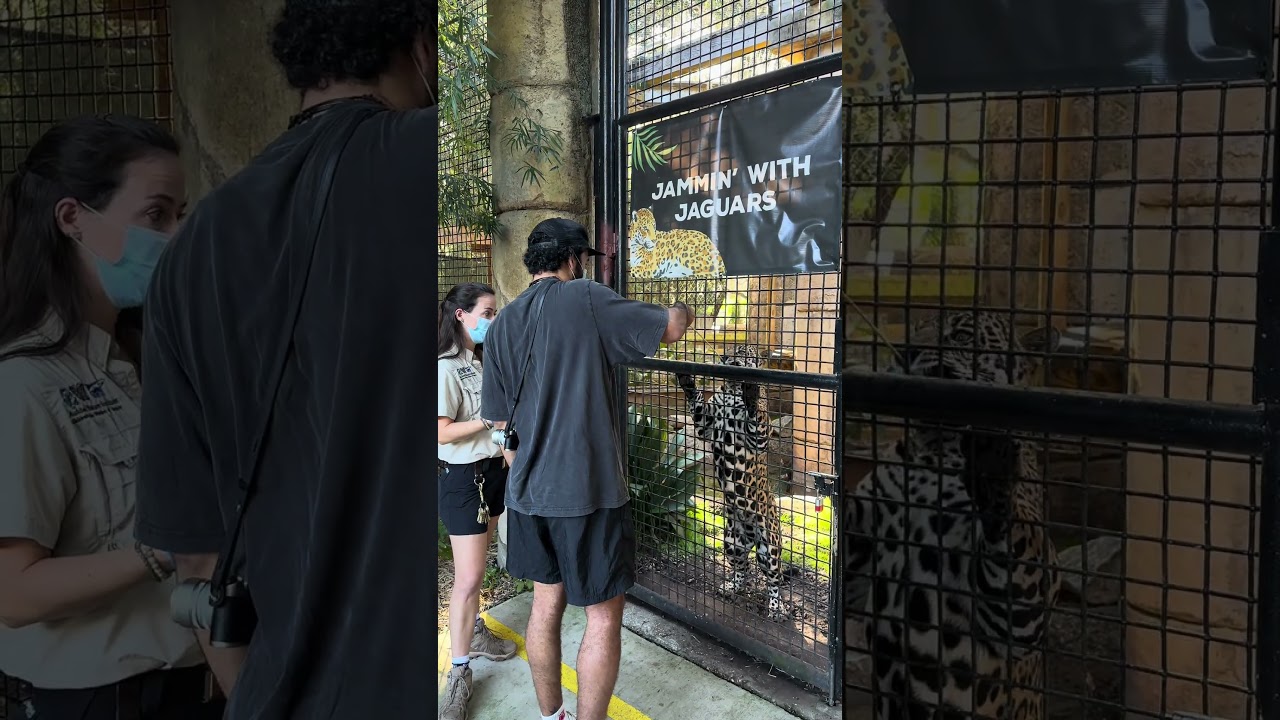- Explore the Jammin’ with Jaguars Wild Encounter program at Audubon Zoo, detailing its unique aspects and objectives.
- Highlight the importance of jaguar conservation efforts and the role zoological institutions play in wildlife preservation.
- Examine the scientific and educational benefits of interactive animal encounters for the public.
- Discuss the role of zoos in biodiversity conservation and the specific contributions of Audubon Zoo.
- Provide insights into jaguar behavior, habitat, and the current threats they face in the wild.
Audubon Zoo’s Jammin’ with Jaguars Wild Encounter promises to be an enriching experience, merging education, conservation, and wildlife engagement. This unique program allows participants to delve deep into the world of jaguars, offering insights not just into their majestic nature but also emphasizing crucial conservation efforts.
The encounter program at Audubon Zoo offers participants an immersive experience, simulating the exotic habitats of these magnificent creatures. The zoo meticulously constructs environments that reflect the dense rainforests and riverine ecosystems, integral to the jaguar’s existence. The encounter enables visitors to observe jaguars up close, appreciating their agility, strength, and intricate patterns—each fur detailing a masterpiece of evolution. Such experiences are crafted to instill a sense of wonder and responsibility towards conserving these animals and their habitats.
Jaguars, known scientifically as Panthera onca, are the largest cats native to the Americas. Rich in symbolism and ecological significance, they stand as apex predators crucial in maintaining the health of their ecosystems. Jaguars predominantly inhabit areas stretching from the dense Amazon rainforest to the southwestern United States; however, human activities have significantly dwindled their numbers. Deforestation, poaching, and habitat fragmentation stand as formidable threats. Programs like Jammin’ with Jaguars aim to shed light on these pressing issues, advocating for changes necessary to reverse troubling trends.
Educational programs at zoos transcend mere observation. They facilitate interactions that are both scientifically informative and emotionally engaging. By connecting audiences with wildlife, these programs enhance public understanding of ecological dynamics. This, in turn, fosters a conservation ethic that goes beyond the zoo, encouraging people to make environmentally conscious choices. Such interactions also serve as platforms for scientists and educators to communicate complex ecological processes, such as predator-prey relationships and the role of apex predators in sustaining ecological balance.
Zoos play an intrinsic role in global biodiversity conservation. They are custodians of knowledge and biodiversity, often spearheading conservation projects directly impacting species survival in the wild. Audubon Zoo’s commitment to jaguar conservation exemplifies this role. They have been involved in breeding programs, research, and habitat preservation efforts, contributing to the broader mission of ensuring species survival. The zoo collaborates with international organizations, contributing data and resources to understand better the challenges jaguars face and to develop effective conservation strategies.
Understanding jaguar behavior and ecology is critical to their conservation. These solitary mammals are stealth hunters, often preferring the cover of darkness to stalk their prey. Their diet is highly varied, showcasing the adaptability of their hunting strategies. Jaguars are known for their powerful bite, which allows them to pierce the skulls of their prey—a technique distinct from other big cats. This adaptability makes them formidable predators but also highlights the delicate balance of their role in the ecosystem. Should their numbers dwindle, the effects would ripple through their environment, impacting species lower down in the food chain.
The wild populations of jaguars face numerous threats beyond immediate human-induced dangers. Climate change poses long-term risks by altering habitats, reducing prey availability, and increasing human-wildlife conflict. As climates shift, so do ecosystems, often pushing jaguars into closer proximity with human communities. Programs like Jammin’ with Jaguars aim to educate about these less immediate, yet equally critical, threats, underscoring the importance of sustainable practices that protect both wildlife and human interests.
Interactive programs such as those offered at Audubon Zoo are more than just educational; they are transformative. By fostering a deeper understanding and appreciation of wildlife, they inspire actions and attitudes that champion conservation efforts. These programs bridge the gap between passive awareness and active engagement, empowering individuals to contribute positively to environmental stewardship.
In the greater context of zoological management and wildlife conservation, initiatives like Jammin’ with Jaguars effectively embody the dual mission of education and conservation. They highlight the importance of preserving not just individual species, but entire ecosystems. By engaging the public, raising awareness, and fostering a sense of responsibility, zoos like Audubon contribute significantly to global efforts in biodiversity conservation.
Through education and direct animal encounters, Audubon Zoo offers a platform many might not experience otherwise. This initiative underscores the vital connection between humans and wildlife, emphasizing that conservation is not merely a scientific endeavor, but a shared responsibility. Visitors leave not only with newfound knowledge but with a respect and fondness for jaguars and an understanding of the precarious balance they, and countless other species, navigate in the modern world.
*****
Source Description


